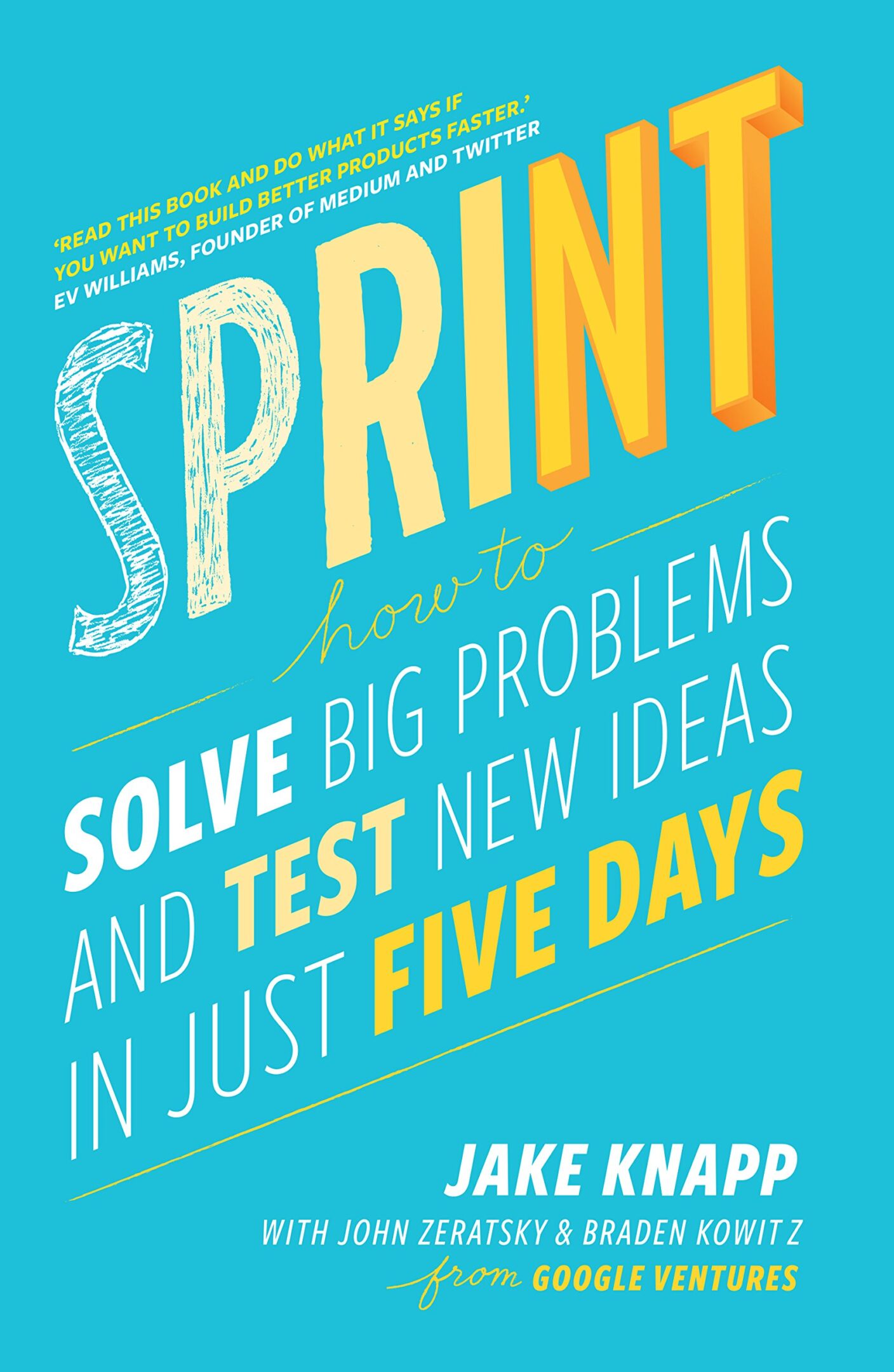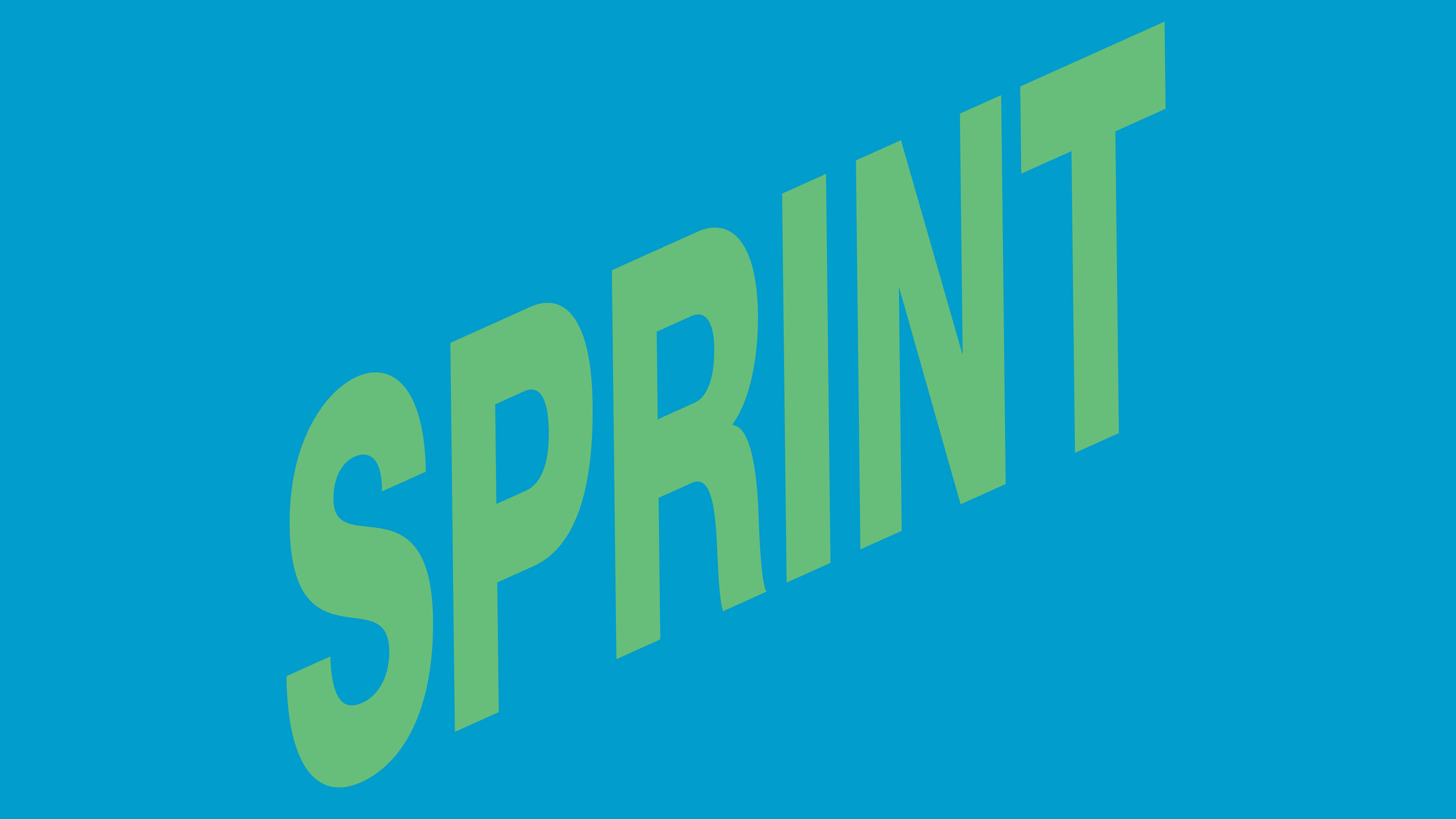
SPRINT: A SUMMARY
Set the Stage
Sprint, a book authored by three Google Ventures experts, offers a concise and powerful approach for problem-solving. It presents a proven model utilized by numerous companies to validate ideas swiftly. This must-read book caters not only to entrepreneurs and tech leaders but also to teams of all sizes in any industry. Innovation poses challenges, regardless of your profession or organization size.
Challenge
Start with a big problem
If you’ve faced frustrations while introducing new ideas or creating business models, you’re not alone. Many invest substantial resources in testing ideas only to discover they took the wrong path. To avoid these pitfalls and deliver a product aligned with customer needs, you must explore alternative approaches. Enter Sprint, a highly effective and straightforward methodology developed by designer Jake Knapp at Google. It has yielded tangible results across Google’s units and over 100 companies funded by Google Ventures. Sprints are five-day cycles that accelerate project management and provide a faster idea validation process. Startups especially benefit from this method, as it minimizes the risk of launching unsuccessful products due to limited resources and emphasizes adaptability.
Team
Get a Decider, a Facilitator, and a diverse team
You need small, multidisciplinary teams with clearly defined roles. Jake recommends teams of fewer than 7 members with the necessary skills for project delivery.
- Decision maker
- Financial expert
- Marketing expert
- Client expert
- Logistics expert
- Problem creator
- Facilitator
Two critical roles must be decided upfront: the decision maker and the facilitator. The decision maker handles difficult decisions and conflicts, while the facilitator manages resources and ensures the sprint’s success.
Time and Space
Schedule five days and find the right room
The project requires a conducive environment, including whiteboards, post-its, pens, refreshments, and a timer. Participants’ schedules must be clear, devoid of interruptions, and distractions eliminated. Each sprint day consists of six productive hours from 10 am to 5 pm, with a lunch break, to maintain energy, focus, and productivity throughout the week.
Monday
Start at the End
Agree to a long-term goal
In order to initiate the process, we need to identify a problem that is significant enough to generate interest. It is important to have a long-term goal in mind from the beginning, considering the reason behind our actions. For instance, we may aim to improve patient outcomes. We should also determine where we want to be in 6 months, 1 year, and 5 years.
To achieve our long-term goal, certain conditions must be met. For example, patients must sign up for the app and clinics must change their workflow. From these key statements, we can formulate a question such as, “Will clinics change their workflow?”
To further evaluate the viability of our project, we should imagine ourselves in the future where the project failed and analyze potential causes of failure.
Map
Diagram the problem
Next, we can draft a roadmap starting from the desired end result and working backward. In Section 1, we identify the actors or clients involved, such as patients, doctors, and coordinators. Section 2 outlines the necessary actions or steps for each person involved, including making appointments, prescribing medications, arranging medication pick-up or shipment, conducting follow-up tests, adjusting medications, and scheduling more appointments. Finally, in Section 3, we describe the ultimate outcome, which includes an easier process for both patients and doctor’s offices, resulting in time savings, better compliance, and improved patient outcomes.
Ask the Experts
Interview your teammates and other experts
To address any questions or uncertainties regarding the roadmap, we can conduct short inter-company interviews with experts. Using the “How Might We?” (HMW) method pioneered by P&G, we can transform everything into a question. We write these HMW questions on Post-it notes and place them on the map. Each participant, excluding the decision maker, is given two dots to vote for the most important questions. The decision maker receives four dots for voting. It is permissible to place both dots on a single question if desired.
Target
Choose a focus for your sprint
Afterward, we must choose a target customer and a target “ah-ha” moment on the map. For example, if the patient coordinator’s search for matching clinical trials is the focus, they become the target customer. The “ah-ha” moment is when they realize our solution works better. This decision should align with the initial Sprint questions formulated earlier in the day and represent the area on the map with the greatest opportunity for success and the highest risk of failure.
Innovation is built on existing ideas, repurposed with vision.
- Jake Knapp Tweet
Tuesday
Remix and Improve
Look for old ideas and inspiration
On the designated day, the team gathers to share and enhance existing ideas. The focus is on remixing and improving these ideas. Each team member then creates a sketch of a four-step process that prioritizes critical thinking rather than artistic skills. These sketches serve as the blueprint for the prototype, and the key principle is to encourage “working alone together.”
The day begins with lightning demos, where participants share their favorite solutions to similar problems from various industries or products. A list is created, and each demo lasts for three minutes. During the demos, significant ideas are captured, such as borrowing flavor vocabulary from another industry.
Next, the team faces a decision: should they divide and tackle different aspects of the problem to create the prototype, or should they all work on the same area simultaneously? This division or swarming strategy needs to be determined.
Sketch
Put detailed solutions on paper
The sketching process follows, consisting of four steps.
- First, there is a 20-minute session for note-taking, capturing goals, opportunities, and inspiration from the whiteboards in the room.
- Then, participants spend 20 minutes sketching rough ideas.
- After that, they engage in “Crazy 8s,” generating eight rapid variations of their best ideas within an eight-minute timeframe.
- Finally, there is a 30-minute period dedicated to creating a solution sketch, which entails drawing a three-panel storyboard that is self-explanatory, intentionally rough, devoid of placeholder elements, and accompanied by a catchy title.
As the team is engaged in sketching, there is a simultaneous task of recruiting customers for the upcoming test on Friday. One suggestion is to explore Craigslist as a potential avenue for customer recruitment.
Wednesday
Decide
Choose the best solutions without groupthink
To select the best ideas, the team will create a storyboard that showcases their development. The decision-making process is as follows:
- Art Museum: Solution sketches are placed on the wall using masking tape.
- Heat Map: Participants silently examine all the solutions and use dot stickers to mark the interesting parts.
- Speed Critique: There is a quick discussion highlighting the key aspects of each solution, and big ideas are captured on sticky notes.
- Straw Poll: Each person votes for one solution using a dot sticker.
- Supervote: The final decision is made by the decider, who uses additional stickers to indicate their choice.
Rumble
Keep competing ideas alive
In situations where there are 2 or 3 courses of action or ideas that are incompatible, a decision must be made. The decider can either choose only one solution or decide to prototype both. If the latter is chosen, a note and vote process is used to select a brand name for the second idea.
Storyboard
Make a plan for the prototype
The next step is to create a storyboard. Here are the guidelines:
- Begin by creating a blank storyboard with 15 frames, arranged in a grid of five across and three down.
- Choose an opening scene, such as a web search, magazine, store shelf, App Store, or a news article that mentions your service.
- Fill out the storyboard, depicting how you envision the prototype testing process, using sticky notes from the solution sketches whenever applicable.
- It is important not to introduce any new ideas during this process and strictly follow the ideas already generated.
- The artist takes charge of drawing the storyboard, while others observe. There should be no group copywriting, and the decider makes the final decisions.
- Include just enough detail in the storyboard, and when in doubt, take risks. This is an opportunity to explore and test out bold and daring solutions.
- Once the storyboard is complete, ensure that the entire prototype can be tested within a 15-minute timeframe.
To prototype your solution, you’ll need a temporary change of philosophy: from perfect to just enough, from long-term quality to temporary simulation.
- Jake Knapp Tweet
Thursday
Fake it
Build a facade instead of a product
To create a realistic prototype, it is important to remember that it is a facade and not a minimum viable product (MVP). Here are the principles to follow:
- You can prototype anything.
- Prototypes are disposable.
- Build just enough to learn, but not more.
- The prototype must appear real, not just sketches.
Achieving the right level of quality is crucial. The goal is to elicit a reaction, rather than simply gathering feedback. This “ah-ha” moment is what we aim for.
Prototype
Find the right tools, then divide and conquer
Let’s take a look at some examples:
Fitstar Example
To better explain their fitness software, they created a simulated App Store and an iPad app using tools like Keynote, acting, iPhone, videos, and an iPad. They designed a Keynote presentation that resembled the app download process, with popup videos explaining its features. They conducted tests with customers to see if they had the desired “ah-ha” moment of understanding.
Slack Example
To explain Slack to non-tech customers, they created two competing websites with interactive software using tools like Keynote, InVision, and the real Slack software. One idea was a step-by-step explanation of the software, while the other involved a faux bot team that sent live messages to the user. The prototypes were demonstrated in Keynote and through popup bubbles in the real Slack software.
Foundation Medicine Example
They needed to mark up fake medical reports and summarize the results on the first page. Using Keynote and realistic but fabricated data, they presented the information to oncologists. The goal was to test how doctors responded to the front page of the report and explore different ways of presenting the data.
Savioke Example
Testing an automated robot for hotel delivery, they were unsure about the robot’s personality and how people would respond. Rather than programming the entire robot, they remotely controlled it and used cameras and their own voice to interact with guests.
One Medical Group Example
To see if a doctor’s office for professionals could adapt to families with kids, they transformed a medical clinic into a family-friendly space for one night. They used tools like a doctor’s office, medical staff, bananas, and crayons, and invited families for doctor’s visits to gather insights.
In summary, when creating prototypes, select the right tools, divide tasks among the team, stitch everything together, and conduct trial runs to gather valuable information and insights.
Friday
On Friday, the focus shifts to testing the idea and gathering feedback. Here are the key points to consider:
Small Data
Get big insights from just five customers
Only five guest users are needed for the testing process. This number was determined by Jakob Nielsen, a pioneer in website usability. Typically, about 85 percent of design flaws are uncovered during the fifth interview. The goal is to observe their reactions closely.
Interview
Ask the right questions
Five Act Interview: The interviews should be recorded live with a camera while others watch in a separate room. Observers can write down their observations on sticky notes and post positive and negative feedback on a whiteboard.
The interview process involves the following steps:
- A friendly welcome: Start the interview by reassuring the participant that they are not being tested personally, but rather the product. Encourage them not to worry if they get confused or stuck, as it provides valuable insights into areas that need improvement.
- General open-ended context questions: Begin with small talk and gradually steer the conversation toward the topic of interest. Ask about their work, hobbies, self-care routines, and any fitness-related apps or websites they have used. Inquire about their experiences, likes, dislikes, and reasons for paying or not paying for those services.
- Introduction to the prototype: Seek permission to show them some prototypes, acknowledging that some elements may not work perfectly yet. Emphasize that there are no right or wrong answers, and their honest feedback is valuable. Encourage them to think out loud, share their thoughts, and express their preferences.
- Tasks and nudges: Assign specific tasks to the customer that prompt them to interact with the prototype naturally. For example, ask them how they would decide to try the product if they came across it in the App Store. Avoid giving step-by-step instructions and instead encourage them to explore and share their thoughts throughout the process. Keep them engaged and thinking aloud without pressuring them to find the “correct” answer.
- A quick debrief: Capture the customer’s overall thoughts and impressions. Ask about the product’s comparison to their current practices, likes, dislikes, and how they would describe it to a friend. If comparing different prototypes, inquire about preferences, potential combinations, and the pros and cons of each. Thank the customer, provide a gift card as a token of appreciation, and conclude the interview.
Tips
Some additional tips for conducting effective interviews:
- Avoid multiple-choice and yes-or-no questions; instead, encourage open-ended responses.
- Utilize the 5W’s (who, what, when, where, why) and the 1H (how) to structure your questions.
- Maintain a curiosity mindset throughout the interview.
- Learn together as a group by watching the interviews and taking collective notes.
- Assess the overall experience as positive, negative, or neutral.
- Look for patterns and responses and compare them to the initial sprint questions to gain insights into potential flaws or successes that require improvement and retesting.
Learn
Find patterns and plan the next step
During the interviews, the observers should be in a separate room, watching the live scene unfold. This allows them to take notes and share their observations, both positive and negative, on a whiteboard. This strategy enables a quick assessment of whether the idea and prototype meet the desired standards.
As you analyze the feedback, pay attention to patterns in the responses. Compare the answers to your long-term goals and objectives. The primary objective is to learn from these interviews and use the feedback received to iterate and improve upon the prototype.
By identifying common themes and aligning the responses with your overarching goals, you can gain valuable insights and make informed decisions on refining your idea and prototype. The ultimate aim is to continuously learn, iterate, and enhance the prototype based on the feedback gathered during the interview process.
Comparison
I think it’s important to compare this to the MVP development process outlined in Running Lean as well as the process outlined in the Strategizer Business Model Canvas. GV Sprint tries to condense into a week what many consider to be a “fast” process if done in a month or 3 months.
I think it’s important to consider what you are trying to accomplish before moving forward with an exercise like GV Sprint. See the conclusion below to learn more about Sprint meetup groups. That might be a good way to determine if this process will solve your needs.
Conclusion
You will need to read the book to understand the actionable details. The authors provide many more real world application examples. The back of the book includes a meeting notes schedule for your day-by-day planning.
You can learn more about Sprint on Google’s website here. Further, there are GV Sprint groups and meetups around the country. Some consultancies have sprung up to coordinate these within companies. Given the nationwide movement this has created, I can’t recommend the book highly enough.

Sprint: How to Solve Big Problems and Test New Ideas in Just Five Days Hardcover – Illustrated, March 8, 2016
Author Bio
Benjamin Arritt

Share:
Follow Us:
Most Popular


10+ PERSONAL CRM OPTIONS REVIEWED

10 OUTSOURCED BDR SALES AGENCIES COMPARED

FRACTIONAL MARKETING: EFFICIENT BUSINESS GROWTH
Subscribe To Our Newsletter
No spam. Curated directories & articles about business, startups and templates.
MENU
Related Posts

How to Build a High-Performing Marketing Stack for CMO Success
Dive into our blog post to learn how chief marketing officers can transform from brand champions to revenue drivers and customer whisperers through a strategic

10+ PERSONAL CRM OPTIONS REVIEWED
Yes, there are “solutions,” but nothing is perfect. Here is the path of what I evaluated, what I liked, what I didn’t and why. I

10 OUTSOURCED BDR SALES AGENCIES COMPARED
I interviewed several of the top performers according to Clutch, but this was not my exclusive source. Here’s why: some smaller companies, without as much

FRACTIONAL MARKETING: EFFICIENT BUSINESS GROWTH
Fractional marketing involves hiring fractional marketers, or part-time marketing professionals. This way businesses can leverage specialized expertise while reducing the costs associated with a full-time
